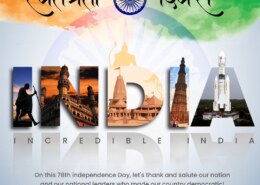List the key components of the post-independence tribal policy. Talk about the reasons why tribal people have not advanced as quickly despite their best efforts. (Answer in 150 words)
Mains Answer Writing Latest Questions
Talk about the creation of cooperatives and how they helped India’s agriculture flourish after independence. (Answer in 150 words)
The socio-cultural integration of India’s population was the founders of the Republic of India’s main priority, not the country’s economic growth. Talk about it. (Answer in 150 words)
-
The Indian subcontinent from its very inception has been home to an extensively diverse populace, however these people being diverse, were evidently divided along various religious, regional and linguistic lines. The founding fathers of the nation sought out the below listed measures to help protectRead more
The Indian subcontinent from its very inception has been home to an extensively diverse populace, however these people being diverse, were evidently divided along various religious, regional and linguistic lines.
The founding fathers of the nation sought out the below listed measures to help protect the nation from ethnic, religious or regional conflicts and hereby maintain it’s unity.1) To appease the diverse linguistic masses, no single language was given priority rather a group of 14 language were given the status of official language under the 8th schedule of the Indian constitution. (Currently 22 languages come under the 8th schedule)
2)The founding fathers disregarded concentration of power at a singular level rather a federal structure was adopted to govern the country.
3)To uplift the socio-economic minorities, reservations were instituted.
4)Shared cultural elements such as the national symbol, the national anthem and the tricolour were encouraged and emphasised upon.
5)To do away with regressive social practices, legal reforms were initiated (abolishment of untouchability, law against sati etc)Hence by using a gradual and flexible approach the monumental task of uniting a vastly diverse populations under a singular national identity was achieved.
See less


Post-independence, the task of integrating the tribal people into the mainstream was extremely complex. The debates on methods of integration revolved around two approaches. One was to leave the tribal people alone, untouched by modern influences and the second approach was that of assimilating themRead more
Post-independence, the task of integrating the tribal people into the mainstream was extremely complex. The debates on methods of integration revolved around two approaches. One was to leave the tribal people alone, untouched by modern influences and the second approach was that of assimilating them into the Indian society. However, India adopted the policy of integrating the tribals based on the Nehruvian approach of tribal development based on the principle of self- empowerment.
Salient features of tribal policy (Tribal Panchsheel) adopted after independence
Further, the Constitution also provided for the setting up of Tribal Advisory Councils in all states containing tribal areas to advise on matters concerning the welfare of the tribals. Also, several tribal- specific initiatives such as Vanbandhu Kalyan Yojana, Special Central Assistance to Tribal Sub Plan, Scheme for development of PVTGS, Forest Rights Act, 2006, scholarships for tribal students etc. have been implemented by the Government. Despite the constitutional safeguards and the efforts of the central and state governments, the tribals’ progress and welfare has been very slow, and even dismal to an extent. Reasons for slow progress of tribals
The constitutional and legislative safeguards should be implemented in letter and spirit protecting the land and forest rights of tribal communities. Further, the right to preservation of their language, culture and traditions, and to protect themselves against the loss of identity, must be recognized, protected and documented.
See less